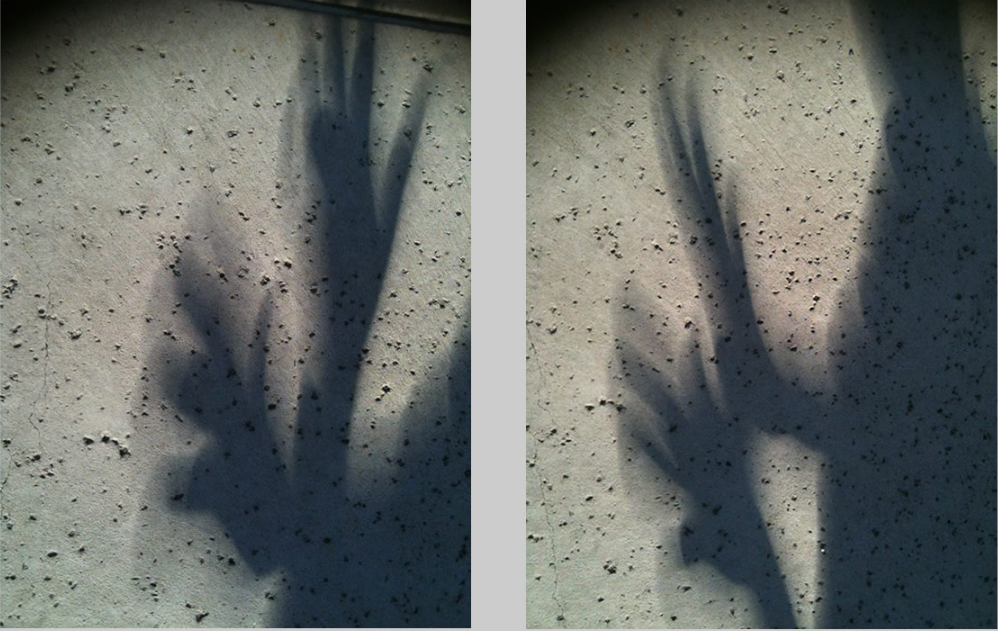OPOD - Eclipse Shadows
OPOD - Eclipse Shadows: A Fascinating Phenomenon Explained
Have you ever noticed that when the sky presents something intriguing, it's worth checking the opposite direction? This atmospheric optics adage holds true, especially during a solar eclipse. One observer, Martha Deacon, discovered this firsthand during the solar eclipse of May 20th, 2012. What caught her attention were the peculiar shapes of the shadows cast during the event. The shadows appeared to have elongated, curved nails, creating a mesmerizing spectacle.
To understand the phenomenon behind these eclipse shadows, we need to delve into the nature of light and shadows. Unlike a point light source, such as a star, the sun is a disk. This distinction is crucial because it affects the characteristics of the shadows it casts. Point source shadows are typically sharp and retain their form regardless of distance. However, sun-disk shadows transform as the distance between the object and the surface where the shadow falls changes.
At close range, an object's shadow appears as its silhouette. As we move further away from the object, the dark shadow, known as the umbra, begins to exhibit a lighter edge called the penumbra. Eventually, at a significant distance, the dark umbra disappears altogether, leaving only a penumbral blur. Within this penumbra, if we position our eye at any point, we will be able to see a portion of the sun.
Typically, we do not notice penumbral shadows in our day-to-day lives. However, when we replace the solar disk with the thin crescent shape of an eclipse, the shadows take on an entirely new character. In certain directions, the sun acts more like a point source during an eclipse, resulting in sharper and darker shadows. The simulation provided in the top left image demonstrates this effect. Even though the finger is still recognizable in this scenario, its shadow becomes more pronounced and distinct.
The crescent shape of an eclipse can be thought of as an arc of point sources, with each point casting its own shadow. As a result, the overall shadow adopts crescent-like features. In the image on the left, we can observe how the finger's shadow transforms into a crescent shape, while the hand appears claw-like. This phenomenon adds a unique and captivating element to the shadows cast during an eclipse.
These eclipse shadows truly showcase the dynamic and captivating nature of atmospheric optics. By understanding the behavior of light and shadows during such celestial events, we can appreciate the intricate interplay between celestial bodies and our own earthly surroundings. So, next time you find yourself witnessing an eclipse, remember to take a moment to observe the mesmerizing shapes and forms created by the interplay of light and shadow in the opposite direction.

Eclipse Shadows
Atmospheric optics adage - When the sky has something interesting, check also in the opposite direction.
Martha Deacon did that during the solar eclipse of 20th May '12. Shadows were strangely shaped with fingers apparently displaying long curved nails.
©Martha Deacon, shown with permission.

The sun is a disk rather than a point light source. Point source shadows are always sharp, sun-disk shadows change form with distance to the surface where they display. Close-up the shadow is the object's silhouette. Further away the dark shadow (umbra) develops a lighter edge (penumbra). Further still and no dark umbra remains. We have merely a penumbral blur. Place the eye anywhere in this penumbra and part of the sun will be visible.
Top left is a simulation of a penumbral shadow. We usually do not notice them.
Replace the solar disk by the thin crescent of an eclipse. Shadows become unfamiliar. In some directions the sun acts more like a point source and shadows become that much sharper and darker in some directions. The finger in the simulation is still recognisable.
The crescent can be regarded as a arc of point sources. Each casts its own shadow. The overall shadow acquires crescent-like features. At left the finger tip has become a crescent shaped shadow and the hand claw-like.
The hands in the images have taken on crescent-like qualities.

Note: this article has been automatically converted from the old site and may not appear as intended. You can find the original article here.
Reference Atmospheric Optics
If you use any of the definitions, information, or data presented on Atmospheric Optics, please copy the link or reference below to properly credit us as the reference source. Thank you!
-
<a href="https://atoptics.co.uk/blog/opod-eclipse-shadows/">OPOD - Eclipse Shadows</a>
-
"OPOD - Eclipse Shadows". Atmospheric Optics. Accessed on November 25, 2024. https://atoptics.co.uk/blog/opod-eclipse-shadows/.
-
"OPOD - Eclipse Shadows". Atmospheric Optics, https://atoptics.co.uk/blog/opod-eclipse-shadows/. Accessed 25 November, 2024
-
OPOD - Eclipse Shadows. Atmospheric Optics. Retrieved from https://atoptics.co.uk/blog/opod-eclipse-shadows/.